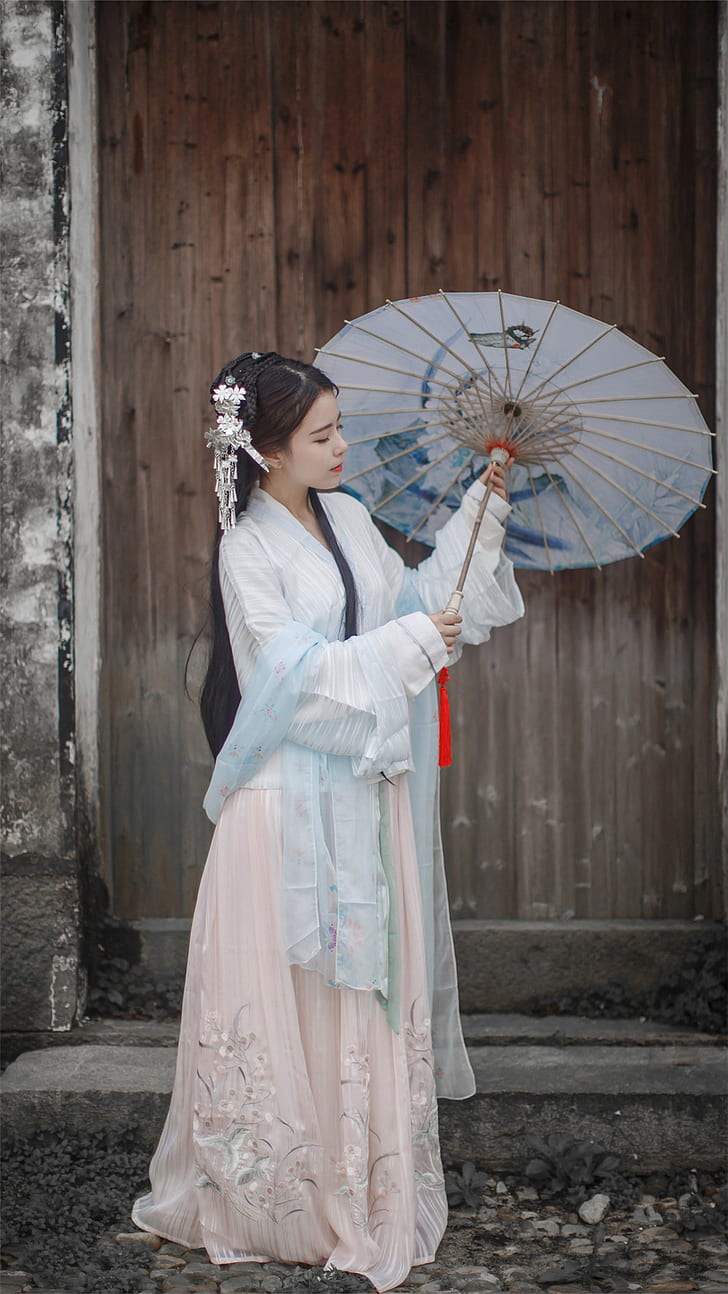The term “Hanfu” is the name for the historical clothing of the Han before the reign of Manchus in the Qing Dynasty. Hanfu refers to a flowing robe with loose sleeves and a belt at the waist that Chinese people usually refer to when they mention Hanfu. However, Hanfu is a broader term encompassing a wide range of clothing styles from different dynasties.
The history of Hanfu dress
Hanfu dress is the name given to the traditional clothing of the Han Chinese, the predominant ethnic group in China before the 17th century. It is said that Hanfu was the clothing of the Yellow Emperor, a great sage king of ancient China, who appeared more than three thousand years ago. During the Shang Dynasty, from 1600 BC to 1000 BC, Hanfu was developed.
Hanfus were worn with yis, frocks with narrow cuffs, and ankle-length skirts, called changs and bixis, fabric extending to the knees of the wearer. Silk was used for them, and they were painted red and green. Han-Chinese clothing has evolved and changed ever since its first appearance. To learn more about Hanfu, you can click here to visit the Lolitainside hanfu collection.
Hanfu’s characteristics
Hanfu is comprised of an upper garment, a robe, and a lower garment, the Shang. Often, the belt sash is ornamented with jade. Symbolizing the aspirations of Confucian scholars towards rituals, music, and moralistic ideals, it represents authentic Chinese culture.
Hanfu consists of an upper garment, typically a robe. The lower garment is typically a skirt. Hanfu consists of clothing and accessories such as headwear, footwear, belts, and jewelry, including jade pendants and handheld fans. A growing fashion revival among young Chinese Han people in China and the overseas Chinese diaspora has seen the hanfu become more widely recognized as the clothing of the Han ethnic group.
Xia and Shang Periods (2070–1046 BC)
Clothing with top bottoms predominated in the Xia Dynasty (2070-1600 BC). Shang Dynasty (1600–1046 BC) established the basic form of Hanfu.
A knee-length tunic with narrow cuffs, the Yi was sash-tied. An ankle-length skirt, the Shang, was worn under the Yi. Those outside wore knee-length aprons or bixis (covers for the knees). Due to limited technology, only two primary colors were available: red and green.
Zhou Dynasty (1045 – 221 BC)
Kings of the Western Zhou Dynasty established a strict hierarchical system based on blood lineage and ethical norms within families during the Western Zhou Period (1045 – 771 BC).
Despite great differences between the nobility and the common people, clothes and ornaments were used as status symbols, which substantially impacted clothes and ornaments.
During the Eastern Zhou period (770 – 221 BC), emperors and officials began wearing Shenyi (one-piece clothing) and Mianfu (a religious court dress). Sleeves on Hanfu and a sash or jade decoration closed the outer tunic of Hanfu. The collar was cross-over.
Qin and Han Dynasties (221 BC–220 AD)
Hanfu details were not changed much between the Qin and Han dynasties. Huns and Han people alike favored the shenyi style of dress. It was a robe made of linen, the pao (robe) worn for formal occasions. Qin Dynasty officials wore green silk pao and shenyi, while commoners wore white linen pao.
Conclusion
Several Han ethnic groups called for a renaissance of Hanfu after it had fallen out of fashion for more than 400 years, believing that the public should be proud of their Chinese heritage. Wearing Hanfu provides many supporters with a strong sense of national identity.
Chinese universities have a Hanfu Society whose members wear Hanfu to celebrate Chinese festivals, and they use that occasion to introduce Hanfu to others. You may get your Hanfu dress from the www.lolitainside.com platform as they offer a discounted price Read More

